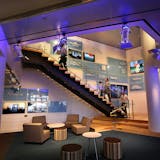No one has more invested in the success of the Green Line than the city of St. Paul.
We supported small businesses through two years of heavy construction. We reassured residents that their neighborhoods would continue to be wonderful, pedestrian-oriented places to live and that they would be able to get back and forth across University Avenue as they always had. And we invested in new stations, streetlights, trees and other amenities that would strengthen the development potential for the area and boost ridership. Our goal was — and is — to provide high-quality transit and create high-quality places that work for everyone.
We are well on our way. University Avenue has never looked better. More than $4 billion of investment is coming out of the ground. And more than 30,000 passengers a day — even before the University of Minnesota is in session — enjoy safe and comfortable rides to and from their destinations along the line.
Having said all that, we know that high-quality transit means rapid transit — and, on that front, we have some work to do ("Green Line needs more green lights," editorial, Aug. 21). Like others, I am concerned about the number of times the train is stopped at red lights. That is not how the system was designed to work.
But eight years of design and construction have taught me that the Green Line is not a plug-and-play. Each step has required that a team of engineers from Metro Transit, the city of St. Paul and a host of consultants methodically implement the design, test its impact, adjust the plan and test it again. That is what is happening now, and I am confident that travel times will continue to come down.
My confidence is rooted in four points.
First: From the beginning, the Green Line was designed to interact with the traffic-signal system. Fresh from the opening of their first line, project engineers told me that this line would not pre-empt University Avenue traffic signals in the same way as the Hiawatha Line. The reasons for not designing a full pre-emption system were many. Traffic volumes on the major cross streets in St. Paul were higher than they were along Hiawatha Avenue in Minneapolis. There were many more pedestrians wanting to get back and forth across the street. And, most important, the technology existed to create a system that would give the train the priority it deserved without throwing the entire signal system out of coordination.
Second: The traffic-signal system that was designed for the Green Line is complex and was never expected to work perfectly upon installation. Cities across the country report a considerable period of testing and fine-tuning to coordinate the train with the signal system.



